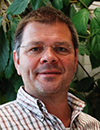08:00 | Registration |
|
Data Storage & Management |
| |
09:00 |  | Keynote Presentation Human Whole Exome Analysis Pipeline for Cancer Genome Sequencing Data
Seiya Imoto, Associate Professor, University of Tokyo, Japan
We developed software for detecting somatic mutations in cancer based on exome sequencing data, Genomon, implemented on the supercomputer system of Human Genome Center at the University of Tokyo. We will introduce details of Genomon and discuss its future. |
|
|
NGS Analysis of Disease |
| |
09:30 | CANCELLED - Genomic Landscape of DNA Repair Programs in Human Cancer
Jung Kyoon Choi, Assistant Professor, KAIST, Korea South
Phosphorylation of the histone variant y-H2AX forms H2AX that marks DNA double-strand breaks. Our findings based on the whole-genome landscape of H2AX and y-H2AX in resting and proliferating cells before and after ionizing irradiation provide insight into DNA repair programs in cancer and may have implications for cancer therapy. |
10:00 | The Korean Genome Project (KGP)
Jong Bhak, Director, TheragenEtex, Korea South
Korean Genome Project is a project carried out by Genome Research Foundation of Korea. It uses next generation genome sequencing technology to map the variations of Korean populations. |
10:30 | Coffee and Networking in Exhibiton Hall |
11:15 | Robust Analysis of Structural Variations Using Paired-end Sequencing Data
Swaine Chen, Assistant Professor, National University of Singapore, Singapore
I will present a new, robust method for paired-end sequencing data analysis to discover structural variations, using bacterial resequencing as a case study. |
11:45 | Next Generation Sequencing Analysis of Lung Cancer Genomes
ByungChul Kim, CEO, Clinomics Inc, United Kingdom
Several pathologically different lung cancer subtypes are analyzed by next-generation sequencing to find somatic variations. The results demonstrate that this approach is useful to detect previously known recurrent mutations as well as novel variations. |
12:15 |  Technology Spotlight: Technology Spotlight:
New Sample Technologies for Next Generation Sequencing
Peter Hahn, Senior Scientist R&D, Qiagen
QIAGEN introduces new technologies for preanalytic solutions streamlining NGS workflow.
|
12:30 | Lunch and Networking in Exhibition Hall |
13:30 | Poster Viewing Session |
|
NGS Optimisation |
| |
14:15 | ChIP and Methyl Sequencing, Dissecting the Subtleties of the Genome
Masoud Toloue, VP of Genomic Research, Bioo Scientific Corporation, United States of America
Strategies for massive parallel sequencing have
revolutionized research across diverse scientific disciplines. Despite these advances methylated DNA immunoprecipitation, methyl-binding domain, and
restriction enzyme based reduced methyl sequencing all need micrograms of genomic DNA, making them incompatible with laser capture microdissection or
rare stem cell populations. We will present our latest ChIP and Methyl-Seq data on genome wide comparisons between differentiated and un-differentiated tissues and explain the significance of these patterns. |
14:45 | Oyster Genome Reveals Stress Adaptation and Complexity of Shell Formation
Xiaodong Fang, Bioinformatician, Leader of Plant and Animal Genome Group, Beijing Genome Institute, China
The Pacific oyster Crassostrea gigas belongs to one of the most species-rich but genomically poorly explored phyla, the Mollusca. We report the sequencing and assembly of the oyster genome using short-reads and a fosmid-pooling strategy, along with transcriptomes of development and stress response, and proteome of shell. The oyster genome is highly polymorphic and rich in repetitive sequences, with some transposable elements still actively shaping variation. Transcriptome studies reveal an extensive set of genes responding to environmental stress. Expansion of heat shock protein 70 and of inhibitors of apoptosis is likely central to the oyster’s adaptation to sessile life in the highly stressful intertidal zone. Our analyses also show shell formation in molluscs is more complex than currently understood and involves extensive participation of cells and their exosomes. The oyster genome sequence fills a void in our understanding of the Lophotrochozoa. |
15:15 | Coffee and Networking in Exhibiton Hall |
|
RNA-Seq |
| |
16:00 | Bacterial Transcriptome Complexity Revealed by Next-generation Sequencing
Byung-Kwan Cho, Assistant Professor, Korea Advanced Institute of Science And Technology, Korea South
Next-generation sequencing technologies are now inspiring a new understanding of the bacterial transcriptome. In this talk, it will be highlighted how this new emerging technology is now revolutionizing our understanding of the complexity, plasticity and regulation of bacterial transcriptomes. |
16:30 | A Genome-wide Look at Post-Transcriptional Gene Regulation
Jason Myers, Director, Ion Torrent Systems Incorporated, United States of America
The combination of RNA Seq and RNA biochemistry is enabling a deeper understanding of the post-transcriptional regulation of gene expression. Until recently the efficiency of next-generation sequencing has limited the number and depth of RNA Seq studies. Ion Torrent Semiconductor Sequencing™ delivers RNA sequencing at an unprecedented speed, scalability and cost enabling in depth analysis of post-transcriptional gene regulation. |
17:00 | Drinks Reception |





